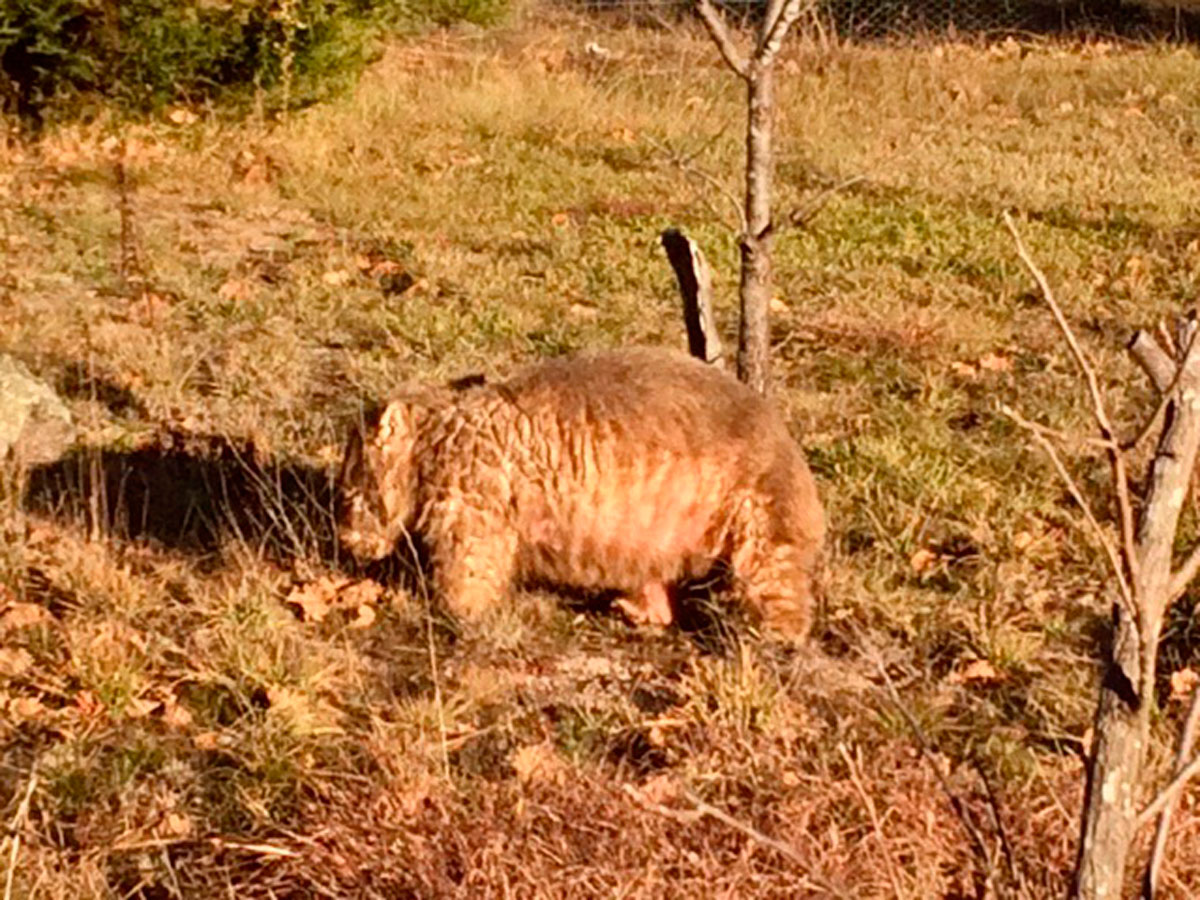Whilst not always the case, one reason why you might see a wombat out during the day, is because it is infected with mange. This is a skin condition caused by parasitic mites – and in wombats it is called sarcoptic mange. The mites that cause mange are believed to be spread by foxes, which carry them and move between burrows and populations of wombats. Mange is also spread between wombats, as they come into contact with each other and if a female has mange mites these will spread to her joey. It is possible that all wombats carry mites but not all wombats get mange. Wildcare has had two wombats in the same enclosure: one developed mange, but not the other one. Stress is also thought to be a trigger.
It is believed mites can live for up to 3 weeks in a burrow, and can subsequently infect an animal that comes into contact with them. For wombats, untreated mange can be a slow death. It initially causes hair loss around the eyes, ears and shoulders, as well as the sides of the abdomen and neck area. It progresses to wide- scale scabbing and cracking of the skin. As the wombat scratches, wounds are opened up and become infected. The animal eventually becomes totally compromised.
In the early stages, mange can sometimes be successfully treated. Wombats in captivity, being rehabilitated for later release, can be readily treated. However, for those living in the wild, it is not so easy. Thankfully, however, there are techniques that can be used if landowners want to suppress and reduce mange in their local population of wombats. If you are interested in doing this, then get in touch with Wildcare for advice.
Wombats with severe mange should be reported to Wildcare or another wildlife group, so that an assessment can be made, as to whether to treat or to euthanise. Not all wombats with hair loss have mange and their injuries might be caused by something else, such as a wombat attack. Often these wounds are treatable.
People can also be affected by the mange mites and develop a condition which, in humans, is called scabies. Many wombat carers have ended up with an overall itch that won’t go away! Fortunately, mange in humans can be treated with Ascabiol lotion (or similar), which is applied to the whole body from the neck down!
Mange continues to have an increasing impact on local wombat populations and it is a difficult problem to overcome.
If you need any help with wildlife matters, get in touch with Wildcare on 6299 1966. If you are interested in caring for injured or orphaned native animals check out the website: wildcare.com.au.
Merran Laver & Philip Machin
For Wildcare
62383717

